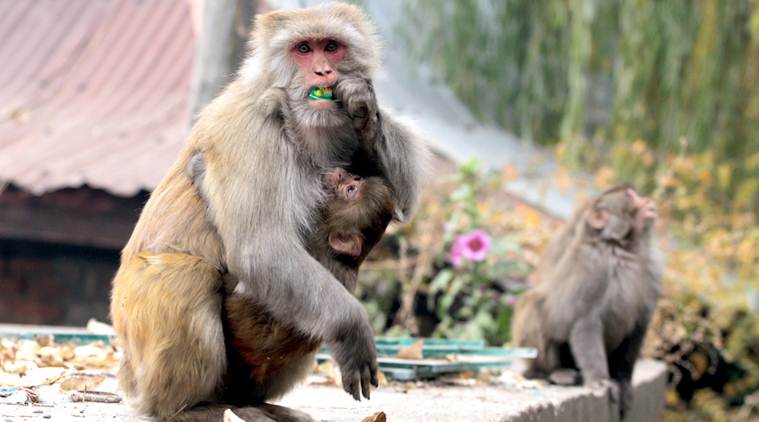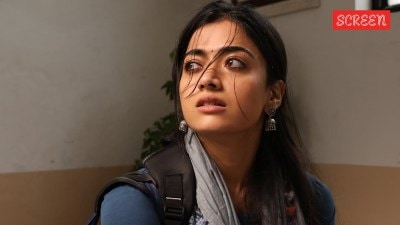Down in Jungeland: The ‘It’ Crowd
Or, why animals can express emotions better than what we give them credit for.
 Nothing neutral about them: Monkeys are the most expressive of animals.
Nothing neutral about them: Monkeys are the most expressive of animals.
We are supposed to refer to all animals as ‘it’ — not he or she — indicating that, perhaps, they are not living things after all. The he and she get together and make he and she babies (something only we have the privilege of doing). Animals are animals and do not have personalities. Of course, this doesn’t quite work out because, since time immemorial, writers, poets, zoologists and practically everyone else have associated animals with expressions, and loaded them with personality and emotional content (which has the white-coated scientific community shuddering in horror).
Thus, lions — what with that magnificent hairdo — will always be deemed regal and lordly, somewhat benign perhaps, except when you see the merciless glitter in their eyes when they seek to destroy cubs sired by an ousted rival (kings have done that too, all through human history!) Tigers — easily the most beautiful of big cats, can vary their expressions well. From being regal and gracious, and even kindly-looking to being snarling cauldrons of sheer, explosive rage when they lift their upper lips and flatten their ears back against their heads. Leopards, beautiful as they are, will, with their hunched posture and step by step belly-crawl always symbolise cunning and stealth — a creature (of the night) to stay away from.
As for wolves, with their slanting, piercing eyes they are also enigmatic. Foxes, with their long narrow muzzles and pricked up ears, have for ages epitomized craftiness and cunning, and are in fact synonymous with it. But wolves and dogs ‘smile’ too, often from ear-to-ear with tongues hanging out a mile!
It’s the vegetarians that can get us into trouble, because, so often, what they look like may not reflect the mood they are in or their “personality”. Elephants look as though they’re smiling all the time, what with their mouth-line curving gently upwards; you do not expect a smiling creature like that to ever do you harm. Even while angry, with ears flapping, head bobbing and trunk rolled up, it doesn’t look ferocious in the conventional sense of the word, though it may do us more damage than any tiger or lion. As for rhinos, I would hate to let them know that frankly, I think they look cute (it’s not a word I like to use, but so fitting in this case!) — with their armoured barrel bodies, baby faces and, tiny ears and eyes… And that gorgeous rolling gait with which they can hit probably 30 mph! Hippos are a bit of a mix-up — when they shut their mouths they look pretty benign, but when they display their dentistry they look like unfinished carnivores. But they never look as ill-tempered as they are — killing more people than all the famous big cat predators combined.
Deer and antelope, which often have dark, soulful eyes, are perhaps truer to their looks — as the top favourite prey species, they are wary and flighty and look like that, as if on the verge of a nervous breakdown all the time. The buffalo, on the other hand, with its head held high and a wide sweep of horns, reeks of arrogance and cold rage; a creature you instinctively dare not trifle with or trust, and will stay well away from. They look born ill-tempered.
Crocodiles and alligators, too, look as if they’re smiling toothily all the time, which again can be devastatingly misleading, though those teeth give you a pretty good indication of their intentions and abilities. And yet, they have a humorously wicked glint in their eyes!
The creatures you cannot take seriously, of course (at your own peril), are the wild boar. Chunky, bristly and looking as if they’re perpetually grinning. Despite those two notorious tusks curving out of their faces, they make you smile every time, even when you should be getting out of their way pretty damn quick!
As for birds, their expressions (and personalities you associate them with) vary with the species. Much of it lies in their eyes: chickens and some game birds have the cold, expressionless eyes of reptiles. The glowering, burning eyes of raptors are the epitome of fierceness (you will not look long, deep and soulfully into those eyes!), and owls have large lustrous eyes — almost like ours! Crows are beady-eyed and shrewd, in perfect consonance with their personalities.
It’s the apes and monkeys that — because they are so like us, I guess — have so many different expressions. Gorillas always tend to look solemn and pondering (that brooding, overhanging forehead), chimpanzees are shrewd, calculating and appraising — but always on the edge of an hysterical tantrum, and, orangutans frankly look like sweet, gentle con-artists who will diddle you out of your love, fame and fortune, even as they hug you!
In the oceans, sharks always come across as cold-eyed and merciless with that thin-lipped look, and those rows of razor teeth; seals look so soulful and dreamy with their enormous liquid eyes, and otters look like furry friendly fellows as they lie on their backs and smack oysters on their tummies.
The scientific community strongly advises itself and us not to “personalise” the animal subjects that they, and we, study. Yet, Jane Goodall and the late Diane Fossey did — they gave their study subjects names and not numbers because they thought it was the right and fair thing to do. Guys might sneer and say, that’s because they were women and emotional, and you know girls will dress up even pit bulls in bonnets and booties. But, hey, why do top gun fighter jocks paint sharks’ faces (or pretty girls) on the noses of their jet fighters and call them “Meri sapno ki Rani’”or something like that?


- 01
- 02
- 03
- 04
- 05

























